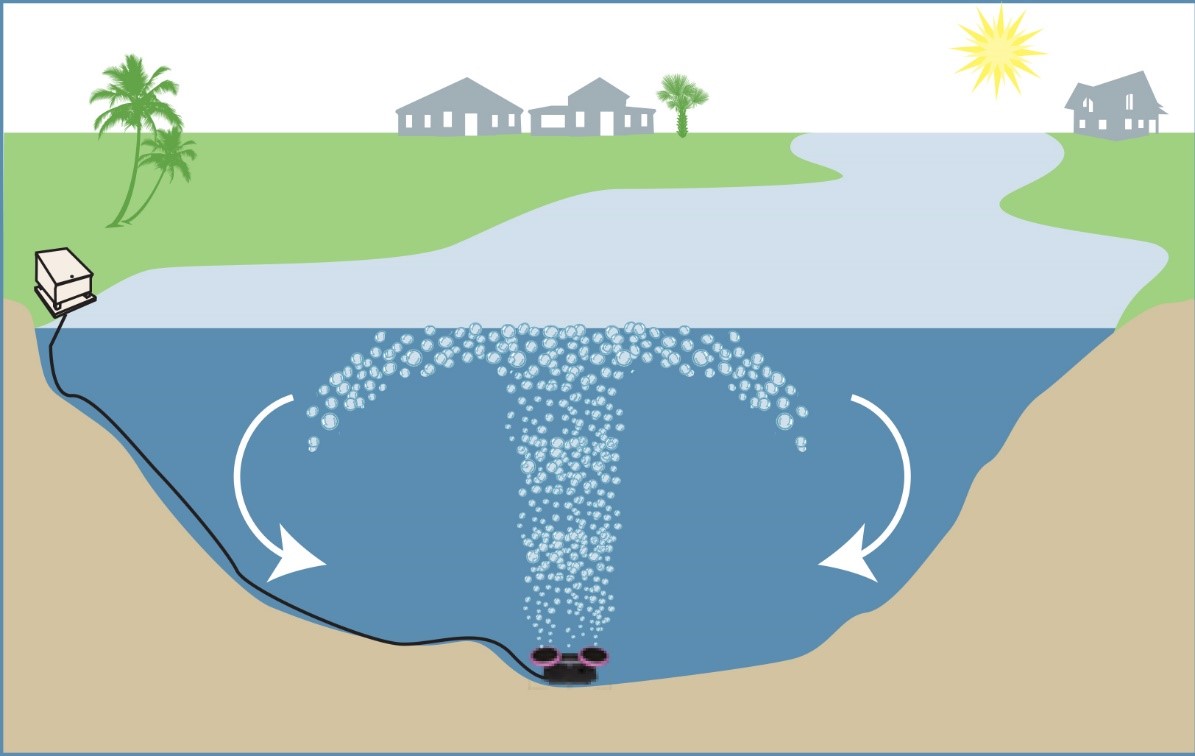Advantages of Pond Aeration

WHY USE AERATION SYSTEMS FOR PONDS OR LAKES?
Professional pond and lake managers have a number of scientifically proven tools to properly manage eutrophic water bodies (ponds or lakes that are overly rich in nutrients and minerals that induce excessive plant and algae growth). One of the most widely used and versatile tools in their toolbox is the aeration system. Aeration is the process of pumping compressed air into the bottom waters of a lake or pond. Aeration causes two related but separate benefits that are vital to maintaining a healthy ecosystem.
Benefit # 1: Circulation. Water needs to be constantly moved in your lake/pond to prevent stagnation and toxic chemicals from building up.
Benefit #2: Oxygenation (adding oxygen). Insufficient oxygen levels in your lake/pond can lead to poor water chemistry and impair your lakes fishery.
Aeration systems create bubbles as small as 0.5 mm in diameter that form an ultra-wide column of upward moving water. This upward water “turns the lake over,” allowing oxygen to be absorbed at the lake’s surface. Aeration systems continuously lift bottom water to the surface where gases are expelled and oxygen is absorbed. This allows colonies of beneficial bacteria to once again flourish along the bottom of the water. Nutrient levels decline and water clarity increases. Oxygen-related fish-kills are eliminated, sports fisheries are improved, and fish can expand their territory into the formerly oxygen-deprived portions of the water.
Other Benefits of Aeration Include:
- Reduced Nutrients
- Increased Water Clarity
- Improved Water Chemistry
- Reduced Odors
- Reduced Algal Blooms
- Fishery Improvement
- Habitat Expansion
- More Favorable and Balanced Food Web
- Increase in Beneficial Bacteria
If aeration is right for your pond or lake, it is important to choose the correct sized system. You will need to select the size of the compressor as well as the number of diffusers. Smaller ponds (less than 1.5 acres) can typically use 1/4 HP compressors. Larger ponds or lakes may need 1/3 HP, 1/2 HP, 1 HP or even larger compressors. The type and number of diffusers will depend on the area you need to aerate and the amount of circulation required.
Contact us if you need assistance with determining the correct aeration system for you.
Phone: (419)352-6870
